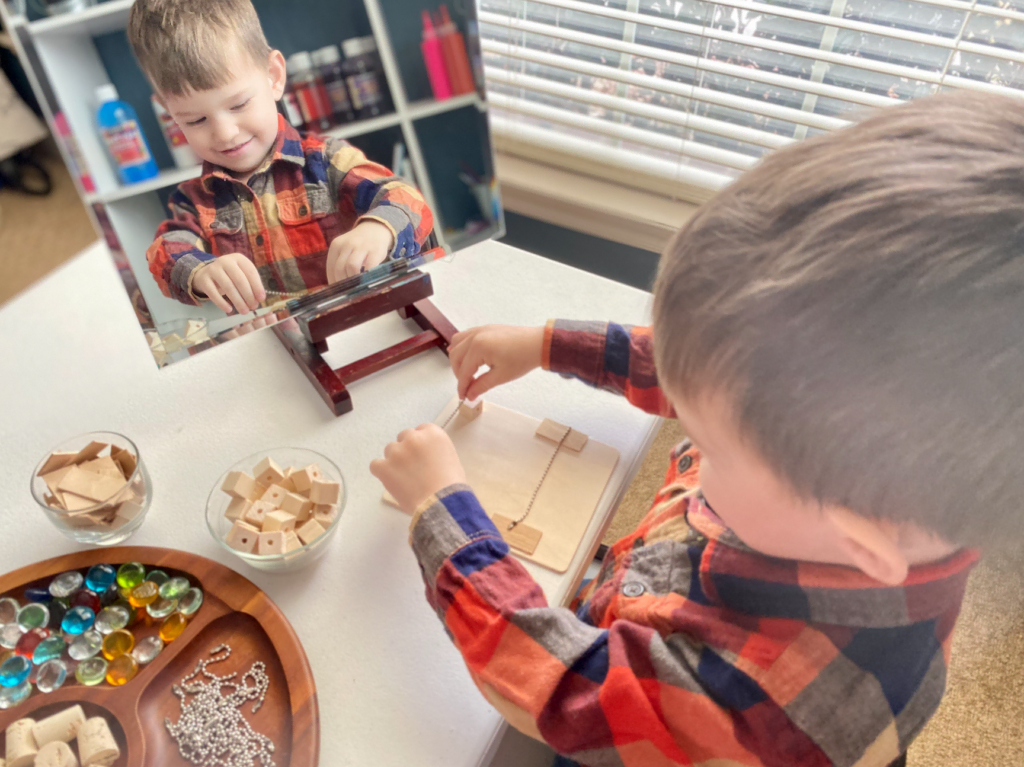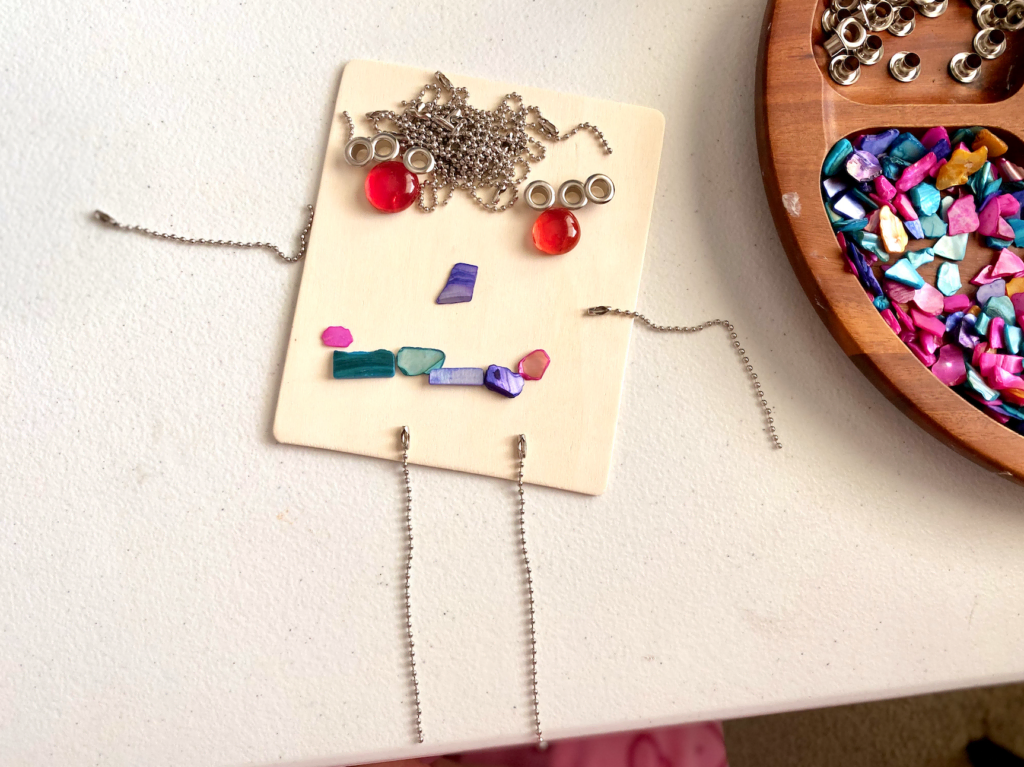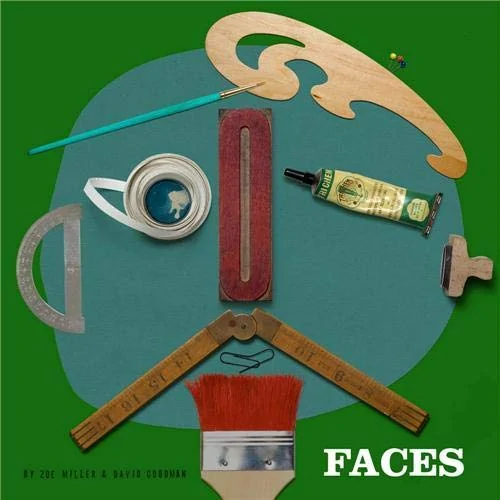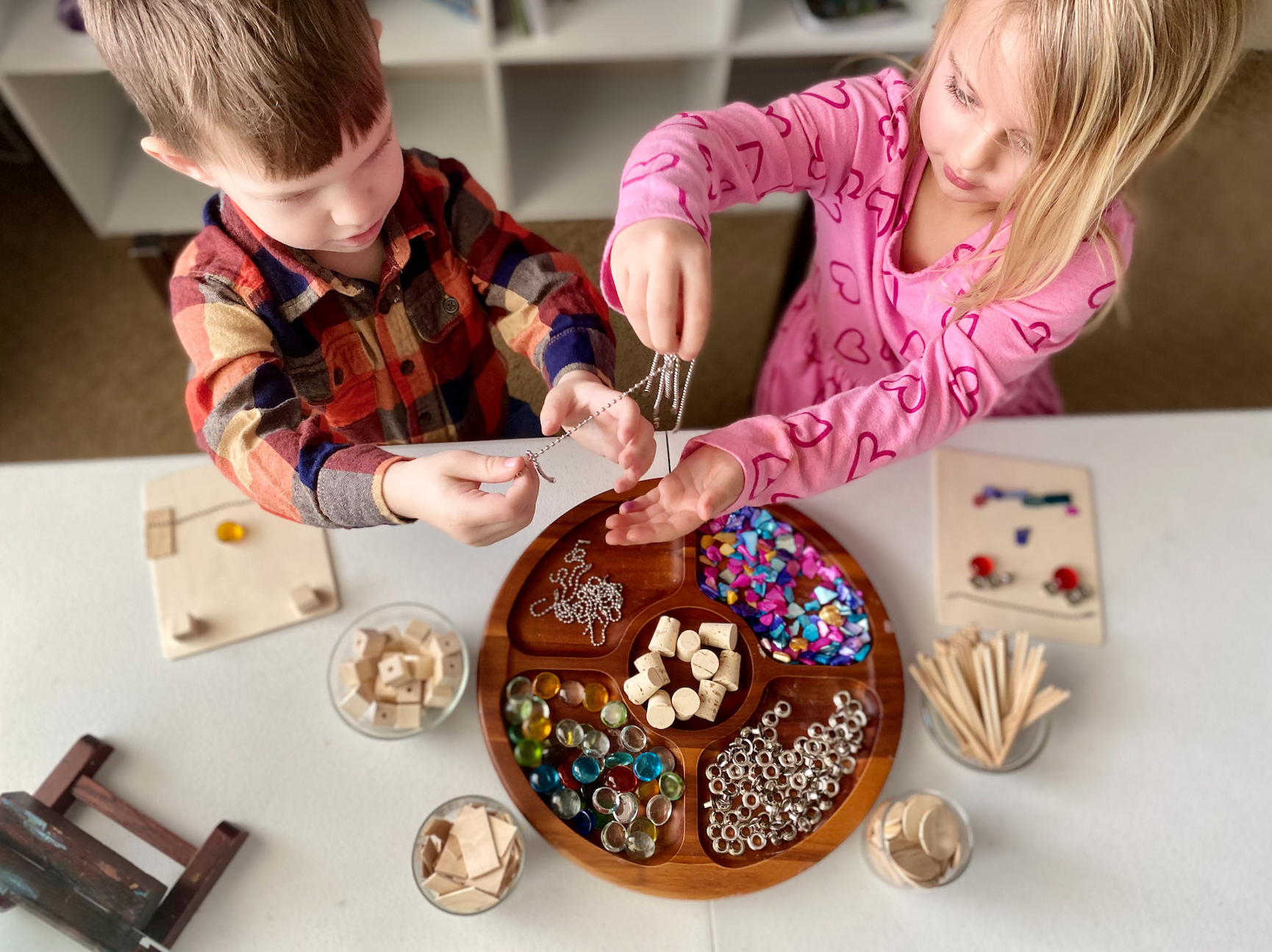Playing with loose parts to represent our faces ignites our imagination and the skill to create relations between objects and the things we want to express.
With this Play Invitation children can develop the sense of spatial organization, composition, and make choices. This is also a great proposal to explore identity, face and diversity concepts.
What Could Lead Us to This Play Invitation
- Children have been exploring self-portraits;
- Children are curious about her self-image and personal characteristics;
- Children are excited about using small loose parts to represent ideas.
Materials Needed
• A base (wood, fabric, or anything can work)
• Small loose parts (Plastic, Metal, Ceramic, Nature, Wood, Paper and Cardboard, and Fabric)
• Glue
• Mirror (optional)
Setting up this Play Invitation
- Place a mirror over a table.
- Lay out the loose parts on a divided tray close to the mirror.
- Place the bases over the table and set the working spot in a position where children can access the materials and observe their faces in the mirror.
Tip: You can use different shaped bases to diversify the exploration and support children stepping out of the stereotyped shape of a face.
How to Create the Composition
- Invite children to explore possible compositions placing the loose parts over the base.
- Children can glue the pieces at the end of the play when they are satisfied with the result.


Optional Next Step: Glue a stick to the back of each base and use them as puppets, inviting children to create a story.
How to Nurture the Natural Unfolding of the Child’s Identity During This Play Invitation
- Children have the right to explore and find new interpretations of what surrounds them. In this proposal, the child can choose not to create the typical face with the “correct” positions but instead can use their imagination and create new characters.
- Children have the right to play with little things. The adult must always guarantee safety, adapting the proposals to the ages, but with proper supervision, we can expand the range of materials to explore.
The Academic Learning Opportunities
- MATH: Explore shapes, and quantity and develop spatial awareness.
- LANGUAGE: Engage in exploratory and imaginative play with different materials, and elaborate on an imaginative idea.
- PHYSICAL: Build on their fine motor skills and visual-spatial relationships.
- ART: Explore beauty and aesthetics concepts, giving materials new meanings.
Extensions
- Create compositions that communicate. For example: how would you make a sad face? Note if the choice of materials relates to specific feelings.
Book Recommendation

This surprising book brings us unusual and creative ways of making faces.


